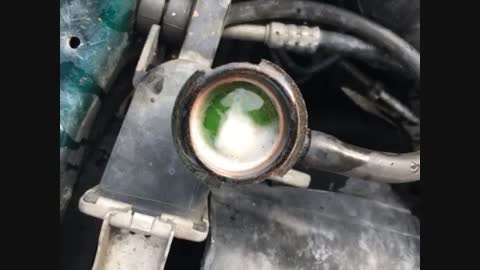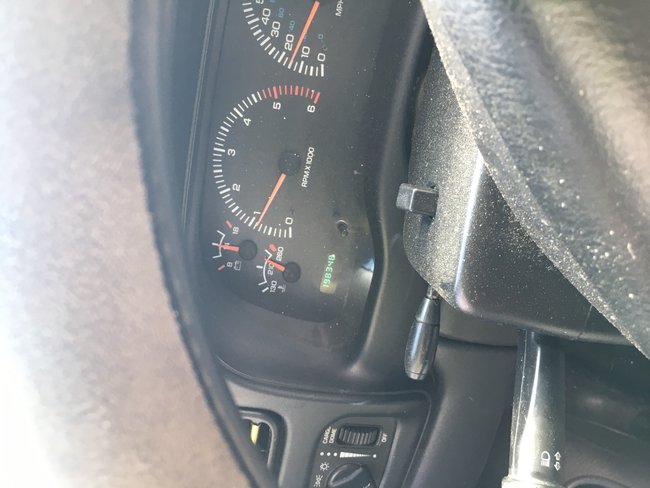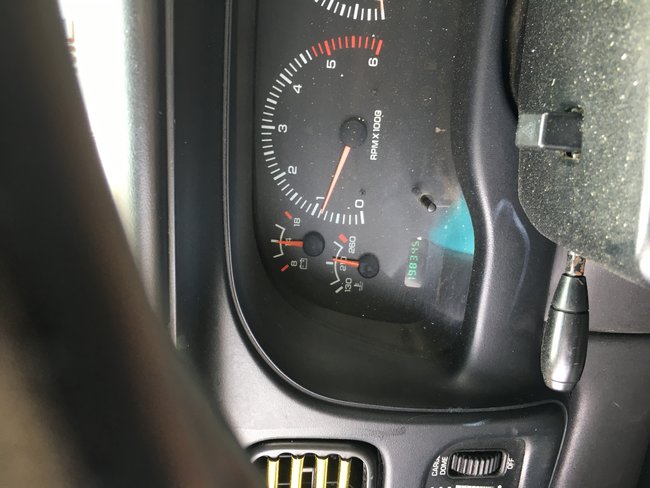When I do this, I suck out some of the coolant so I can see the tops of the cooling tubes inside the radiator. That makes it easier to see the flow. You should see it flowing about as fast as you'd have water flowing from a garden hose if you were trying to get a drink from it.
The next thing is to stop the engine and feel the two radiator hoses. Under normal operation, the top one will be too hot to hold onto for very long. The bottom one should be much cooler. If it is cold, there's insufficient flow. Either the radiator is plugged internally, the belt is slipping over the water pump, or, if this was a Volkswagen, the blades on the water pump's plastic impeller are corroded away.
If the lower hose is almost as hot as the top one, no heat is being transferred through the cooling tubes to the air. There's either insufficient air flow through the radiator, it's plugged externally by bugs, the fins are corroded away, or air is able to bypass the radiator, either from a missing shroud or from something else that is not as it was designed.
If you have an infrared thermometer, use that to check the radiator's temperature at all areas. It should be the same at any height from side-to-side, and every section should become cooler the further down you go.
Before you think about replacing the radiator, try back-flushing it with a garden hose. It's easier to remove one heater hose at the engine, then push water into that hose, then into the port on the engine. Leave the lower radiator hose connected so the water has to exit through the top of the radiator with the cap removed. Use a hose pinch-off pliers to block the top hose. That way the water has to flow up through the radiator to get out. When the fresh water enters the port on the engine, you'll have to hold your thumb over the end of the heater hose so the water doesn't come out there. Try to not go over about ten pounds of pressure. That's plenty to see the water gushing a good three to four inches up out of the radiator. You don't have to pinch the upper hose if the thermostat is in place.
Run water into the reservoir too to clean it out. Pull the small hose off at the radiator's neck and let it hang down. Once the reservoir is full, water will run down that hose and syphon it empty.
When you're done, drain the water out, then add antifreeze. My preference is to remove the lower radiator hose at this time to drain the system. Leave the petcock alone. There were a lot of radiators around that time period that developed a crack inside where the o-ring on the petcock seals, then you'd have a drip about once every five seconds. There's no fix for that other than to replace the radiator. That crack only occurred when the petcock as disturbed.
My recommendation when putting in the new coolant is to not waste your money on the "prediluted" stuff. Half of what you're paying for is just water. The way I did this at the dealership was to add one full gallon of antifreeze, then one gallon of water. That just about filled the system for a four-cylinder engine. Next, add a half gallon of antifreeze, then a half gallon of water. Keep adding equal parts of antifreeze and water until the radiator is full. Pop the cap on the radiator, then run the engine until the thermostat opens and coolant is circulating. Four-cylinder engines have to have the air trapped under the thermostat burped out. There's a threaded plug on the thermostat housing, a temperature switch that can be unscrewed, and usually both of those, and on newer models there will be a bleeder screw. V-6 and V-8 engines usually bleed themselves, but keep an eye on it to be sure the upper radiator hose is getting hot. Thermostats have to be hit with hot liquid to open. Hot air trapped under them won't do it. That should only have to be done once. It's when combustion air is sneaking in through a leaking cylinder head gasket that the air pools under the thermostat causing it to close, with overheating the result.
The coolant will be mixed after ten to fifteen minutes. Use a tester to check the freeze point. There's room in the reservoir to add over a half gallon of antifreeze to get the freeze point lower. After draining the system earlier, there's always a lot of water still trapped inside the engine, so you'll usually find you have to add antifreeze to the reservoir. Lower is not better. Shoot for minus 35 degrees. Beyond minus 50 degrees is misleading. The common testers look at the weight of the coolant. Antifreeze is heavier than water, so more of it falsely makes it look like the freeze point gets lower and lower. In fact, as the percentage of water continues to go down, the freeze point actually starts to go back up. Straight antifreeze turns to gel at around minus ten degrees. It's the chemical reaction between the two that makes for the lower freeze point. A second problem with too much antifreeze is that can also lead to overheating. Straight antifreeze can't hold as many BTUs of heat as water can. Water is needed in the system to carry the high volume of heat to the radiator.
Once you fill the reservoir, it's going to take at least a half dozen warm-up / cool-down cycles over a few days to draw that liquid in to mix evenly, so don't bother testing the freeze point until then.
Monday, May 24th, 2021 AT 8:26 PM






